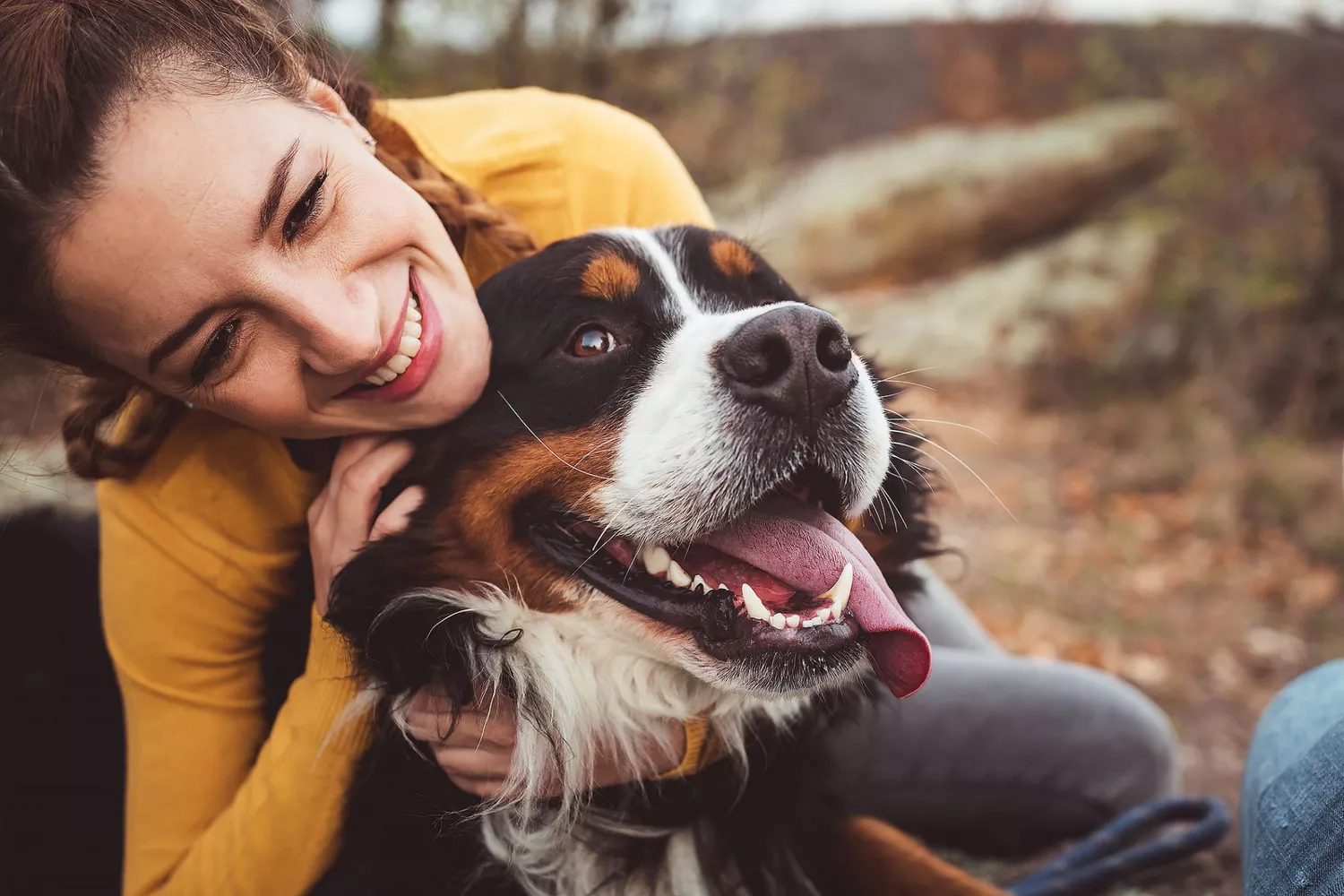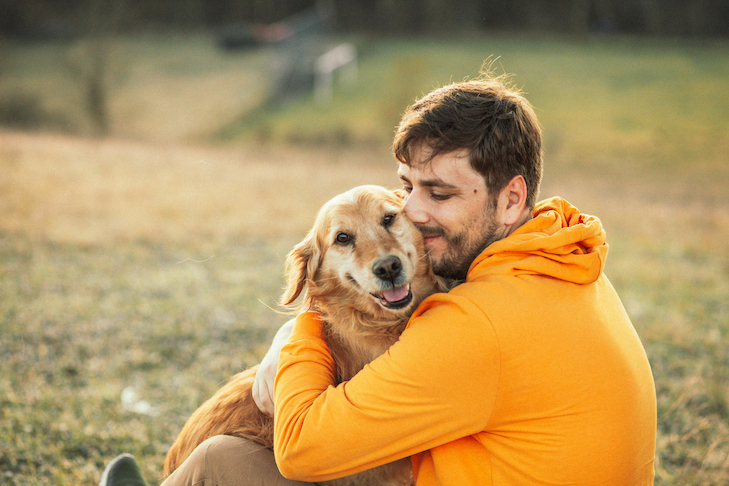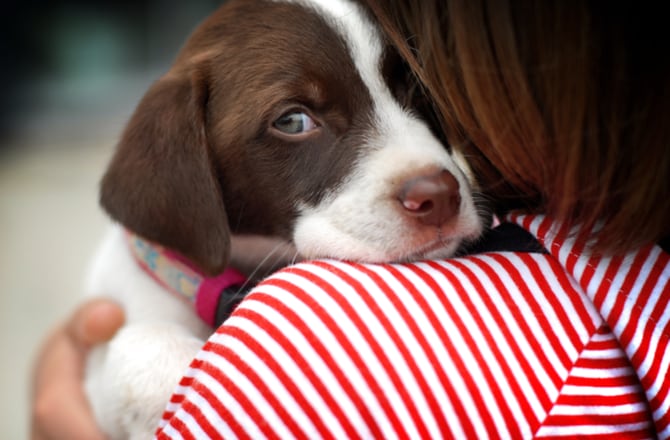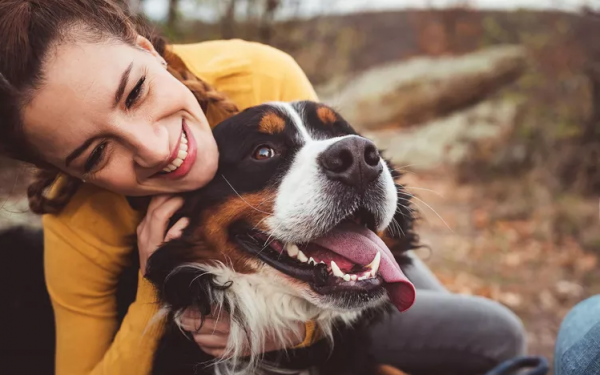Our canine companions offer us an array of valuable gifts, including love, companionship, entertainment, and affection. We often feel a strong desire to express our gratitude and affection towards them through various means such as purchasing toys, sharing tasty treats, embarking on adventures together, and showering them with affectionate gestures like petting. For some dog owners, this also includes hugging.
According to Lauren Novack, KPA-CTP, ACDBC, and MS candidate in Applied Behavior Analysis, hugging is a common human behavior used to express love and support towards friends and loved ones. It’s a way of showing affection, which is why people tend to hug their dogs. However, it’s important to recognize that not all dogs may enjoy or appreciate hugs, and the timing and manner of hugging can significantly impact their response.

What About the Love Hormone?
In developmental psychology, it is widely recognized that human-to-human embraces, such as a mother embracing her child, can elevate levels of oxytocin, a hormone associated with affection and bonding, often referred to as the “love hormone” or the “social bond” hormone. Research indicates that positive interactions between dogs and humans also lead to increased oxytocin levels in both parties.
Nevertheless, studies suggest that while engaging with a beloved human can raise oxytocin levels in dogs, physical gestures like hugs, which might be perceived by the dog as a form of restraint, can induce feelings of fear, stress, and tonic immobility. Such emotional states heighten the risk of aggressive behavior, including biting, in dogs.

To Hug or Not To Hug
Understanding the concept of “hugging” is essential in addressing whether dogs enjoy this form of physical affection. According to Patricia McConnell, PhD, and professor emeritus, the typical notion of a hug—wrapping arms around a dog’s upper body—is not necessarily what dogs perceive as comforting. While dogs may display affection in various ways such as cuddling or licking, the act of hugging, as humans understand it, may not align with their preferences.
Despite some dogs being trained to tolerate hugs, such as therapy dogs, most dogs instinctively react negatively to this form of contact. This aversion might stem from their innate responses to perceived threats or their social and genetic backgrounds. In canine communication, gestures like placing paws or jaws around the neck convey different messages, highlighting the complexity of their reactions. Disliking hugs can also result from past experiences or the current environment.
While there might be exceptions of dogs enjoying hugs, they are rare. According to Novack, persistently disregarding a dog’s signals for personal space could lead to stress and potentially escalate to aggressive behaviors like growling or biting. Hence, it’s crucial to respect a dog’s boundaries and preferences regarding physical interaction to ensure their well-being and prevent any harm to humans.

What to Do (and Don’t Do) Instead
1. Refrain from embracing an unfamiliar dog, as most dogs typically do not appreciate hugs from strangers. Just as you would feel uncomfortable if a stranger hugged you unexpectedly, dogs share a similar sentiment.
2. Avoid hugging your dog in environments with high levels of activity or noise. Such settings can overwhelm dogs, making hugging inappropriate regardless of your relationship with the dog.
3. Discourage children from hugging dogs, despite the adorable moments it may create. Such interactions pose significant risks, as children are more prone to dog bites, often stemming from hugging. It’s crucial to supervise children around dogs and educate them on safe ways to interact. Resources like The Family Dog offer valuable guidance in teaching children proper dog etiquette, emphasizing the importance of seeking permission before approaching and petting dogs.
4. Never approach a dog from behind, as it can startle them and trigger fear or defensive reactions. Dogs prefer to be approached from the front, where they can see and anticipate interactions.
5. Always observe your dog’s body language closely, as it provides vital cues about their comfort level. Signs of fear or stress, even subtle ones, indicate discomfort and should prompt you to halt the interaction. Understanding canine body language is crucial for fostering positive interactions between humans and dogs.
6. Allow dogs to initiate contact and seek attention on their terms. Instead of initiating petting sessions, wait for the dog to solicit attention, respecting their preferences and boundaries. Pausing between pets allows you to gauge the dog’s interest and ensure that the interaction remains enjoyable for them.
When in Doubt, Show Them Love in Other Ways
Some dogs are just never going to be fans of hugging. That’s OK! A responsible dog owner will recognize that every dog has different needs, including their need for affection.
Instead of hugging your dog (or any dog), you can show affection by giving them treats and toys, playing with them, taking them for fun walks and hikes, talking to them in a soft, happy tone of voice, and if they like it, petting.



